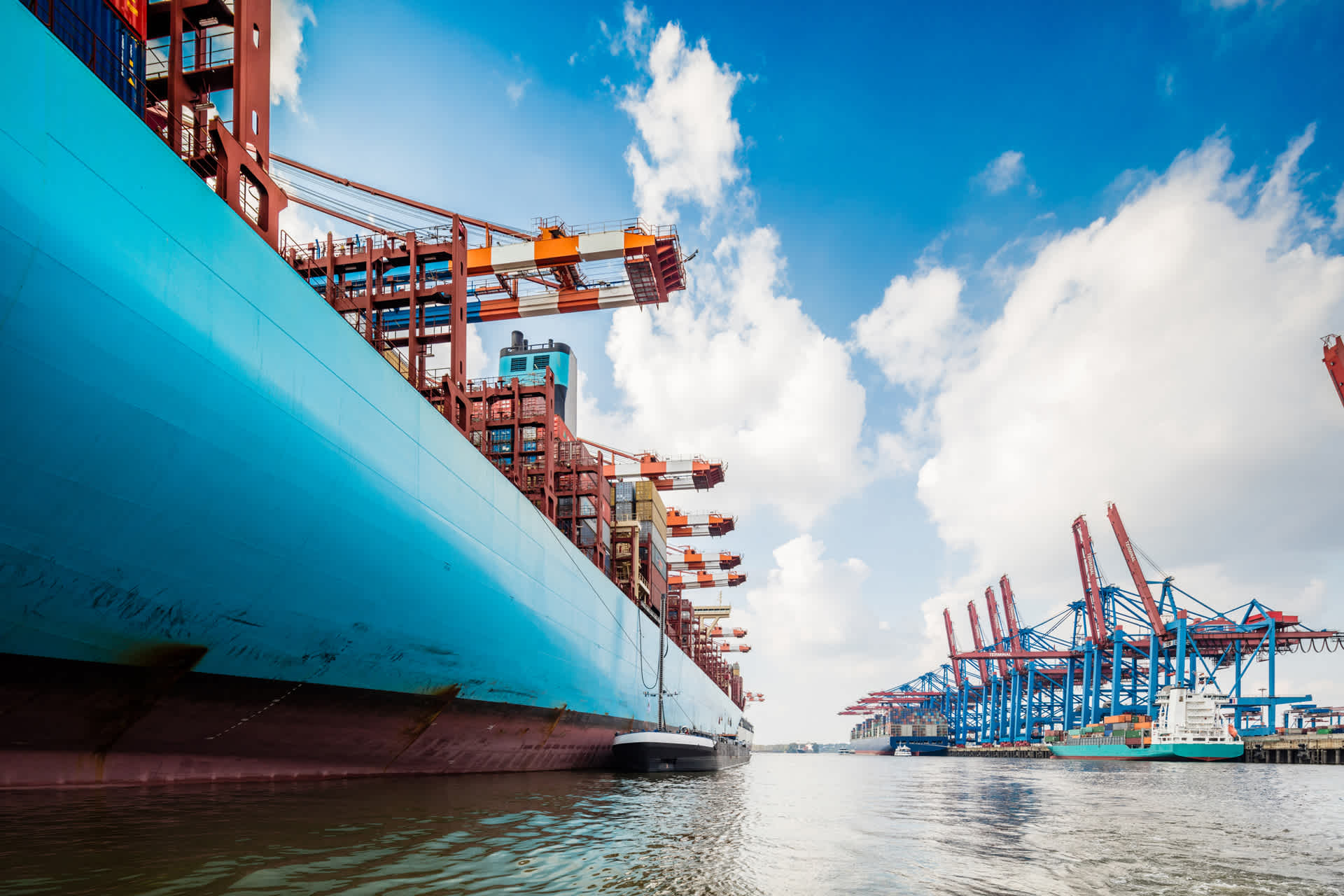Global Logistics Update
Freight Market Update: January 18, 2022
Ocean and air freight rates and trends; customs and trade industry news plus Covid-19 impacts for the week of January 18, 2022.
Freight Market Update: January 18, 2022
Read Now: Ocean Alliances: Everything You Need to Know
Take a thorough look at the power and impact of the world’s three major ocean alliances in this updated brief on carrier relationships.
Logistics Rewired: Ocean Market Predictions for 2022
January 26 at 9:00 am PST | 12:00 pm EST | 6:00 pm CET
In 2021 the ocean freight industry saw record breaking prices, port congestions, container shortages, and more. What can we expect in the year ahead? Join Flexport and our distinguished guests as we look ahead to 2022 ocean trends and strategies.
Ocean Freight Market Update
Asia → North America (TPEB)
- Vessel dwell times at US and Canada West Coast ports remain critical as the pileup of pre-Chinese New Year cargo worsens. The Omicron variant of Covid-19 is impacting the number of dockworkers, with estimates of 1 in 10 staying home (as of last week). Due to severe congestion, ocean carriers are still looking to drive IPI cargo through the PSW gateway, as opposed to cargo for local deliveries. Shippers with urgent cargo, or those working to replenish depleted inventories, are willing to pay premium rates for scarce space, although some softening is expected to be seen post-CNY.
- Rates Rate levels remain elevated, and the premium market is strong for pre-CNY sailings, driving up premium rates.
- Space Critical
- Capacity/Equipment Critical/Severe Undercapacity
- Recommendation Book at least 4 weeks prior to CRD. Consider premium options and carrier IPIs through the PSW gateway. Be flexible in regard to equipment and routings.
Europe → North America (TAWB)
- Schedule reliability Port omissions and changes in port rotations will continue in the mid-term due to weather and congestion issues.
- Congestion at USEC ports is manageable at the moment. Savannah is improving whilst Houston and Charleston are getting more congested. USWC remains heavily congested at both LA and LB despite improvement on the quay. Some blank sailings announced by lines in February.
- Rates Ocean levels continue to remain high with further increases expected as from February.
- Space Critical, especially to the USWC
- Capacity/Equipment Capacity remains tight for both North Europe and Mediterranean services. Better equipment availability at port; shortages remain at inland depots.
- Recommendation Book 5 or more weeks prior to CRD. Request premium service for higher reliability and no-roll guarantees.
Indian Subcontinent → North America
- Demand for space is increasing as we are heading into the ISC region's traditional peak from January - April. This time period is the last quarter of India’s financial calendar where we see demand rise as manufacturers look to close their books strongly to end the year.
- Rates slight increase seen for 2H January. Rates are expected to continue to climb into February as is typical during the ISC peak season.
- Space to the USWC is and will remain a challenge into 2022. Port omissions on services to the USWC continue to cut capacity out of the ISC.
- Space to the USEC remains steady with a good mix of ocean carriers and services. Some port omissions are occurring at Savannah and Charleston due to ongoing congestion.
- Equipment remains a challenge at smaller Indian ports in the South and South-East as well as inland container depots (ICDs). Carriers are encouraging shippers’ use of their own origin carriage services to mitigate equipment shortages. Equipment is normalized at key ports such as Nhava Sheva and Mundra. Recommendation remains to load via wet port instead of using ICDs to avoid delays and accessorial fees.
North America → Asia
- Vessel arrivals and available capacity remain fluid for USWC POLs. USEC capacity has been more readily available; Deteriorating schedule integrity, There continues to be void sailings and delays in schedules creating significant challenges with posted earliest return dates and vessel cut-offs at the port.
- Rates There have been a few GRI advisories posted for early February specific to transshipment ports as well as Oceania destinations.
- Equipment Deficits on containers and chassis continue to plague IPI origins. Availability for standard equipment at ports has not been an issue, but any special equipment is hard to come by.
- Recommendation Please place bookings 4 to 6 weeks in advance to secure your equipment and vessel space.
North America → Europe
- There is available capacity on the TAEB trade from the US East and Gulf Coasts. US West Coast service to Europe is extremely tight due to void sailings and skipped ports caused by systematic delays. Multiple TAEB service strings continue to omit the port of Savannah and are calling Charleston or Jacksonville instead, due to the significant congestion issues at the port of Savannah.
- Rates January rate levels anticipated to remain steady through the month.
- Equipment Deficits are still plaguing IPI origins. Availability for standard equipment at ports has not been an issue, but any special equipment is hard to come by.
- Please place bookings 3 to 4 weeks in advance for East Coast/Gulf sailings and 6 weeks for Pacific Coast sailings.
Air Freight Market Update
Asia
- N. China: Demand is slowly starting to pick up this week and is expected to continue up to the LNY holiday. Rates have also started climbing this week. Covid test kits continue to be a hot commodity in the market.
- S. China: TPEB flights continue to be cancelled after airline crew members tested positive for Covid-19. For the FEWB market, rates have decreased this week and market capacity is relatively sufficient.
- Taiwan: The market is picking up quickly and TPEB rates have increased. The FEWB tradelane remains stable but we expect to see space constraints during the last week of the month.
- SE Asia: Demand ex-BKK has still not fully recovered compared to Q4, however we expect demand to increase as we approach LNY. Rates have overall decreased. Demand ex-Northern Vietnam continues to drop with TPEB rates at a three month low and FEWB dropping slightly. Ex-Southern Vietnam, demand is also weak but rates are relatively stable compared to that of northern Vietnam. Most carriers continue to reject palletized cargo in favor of loose cargo.
Europe
- Demand manageable this week so far. Rate levels are stable and they have not fallen significantly on last week.
- Capacity stable, some small introductions of capacity via LHR, but no significant changes in the market. Do still expect some cancellations as a result of Omicron.
- Deferred routings where airlines have passenger capacity remain to be an attractive option at a good rate level, if there is room for a longer transit time.
- No congestion reported at key export hubs in Europe.
- Advice remains in place ex EU, continue to place bookings early for optimal rates and solutions. Consider smaller batches via air freight, as this is where rates and solutions can be best optimized.
Americas
- US export demand is still soft but is expected to slowly increase during the second half of January. Capacity is manageable.
- LAX/ORD/JFK terminals have slightly reduced the inbound backlog cargo, which has a positive effect on the export side.
- Larger shipments from major outbound gateways can take 2 to 3 days from booking to uplift.
- The US has experienced some domestic and international flight cancellations and/or delays due to Omicron.
- Most terminals provide reduced free time for storage, and have earlier close-outs for exports to accommodate throughput times and screening requirements.
- Rates to Latam, Europe and Asia are slightly increasing compared to the first two weeks of January.
- Congestion at the European hubs is improving which is slightly reducing the average dwell time at destination.
Updates from Flexport's Customs & Compliance Team
New De Minimis Bill Poses Restrictions for Importers
Rep. Earl Blumenauer (D-OR), chairman of the House Trade Subcommittee, introduced a bill that would curtail certain aspects of the current $800 de minimis mechanism. Among the proposed restrictions include prohibiting goods from non-market economies and on the USTR’s IP watch list to enter under de minimis and prohibiting goods subject to enforcement action, i.e. Section 301 and 232 tariffs.
Factory Output News
- US manufacturing activity slowed to begin the new year, according to the Empire State Manufacturing Survey, contracting for the first time since June 2020. The new orders index fell for the first time in 17 months while input costs remain elevated for manufacturers Source
- China ends a three-year decrease in auto sales and turns into a new energy vehicle. According to China’s development plan, NEVs will account for about 20 percent of vehicles sold in 2025 and most of them are private chinese carmakers brand. - less import car volumes in the future Source
- Cambodia 9 new investment projects worth $43 million approved by the Council for the Development of Cambodia (CDC) Source
- Thailand exports to South Korea forecasted to continue to rise with lifting of import tax under the RCEP Source
- Malaysia industrial sector demand expected to rise with re-opening of the economy and upcoming investments Source
- Philippines exports on route to recovery with a 15.2% growth from Jan to Nov 2021. Boosted by a record high 95% increase of coconut oil in export value. Other top exports that recorded double digits or more growth were electronics, manufactured goods and mineral products Source
- India passenger car export from India increased 46% in the first 9 months, while utility vehicle export rose 47% during the same period Source
Freight Market News
LA Looters Add to Supply Chain Disruption CNN Business has reported that thieves in Los Angeles have raided unattended containers to steal packages at the port of Los Angeles and Long Beach. In response, Union Pacific has announced they may avoid operating in Los Angeles County following the spike in theft and recently wrote to the Los Angeles District Attorney.
LTL Rates to Remain High in Q1 Supply Chain Dive reports that continued labor and capacity constraints will continue to fuel LTL rates through March. Despite the drop in weight per shipment, cost per LTL shipment has increased.
Freight Market Update is a complimentary service from Flexport, the modern freight forwarder. If you're not already a subscriber, we invite you to subscribe here.
Please note that the information in our publications is compiled from a variety of sources based on the information we have to date. This information is provided to our community for informational purposes only, and we do not accept any liability or responsibility for reliance on the information contained herein.


